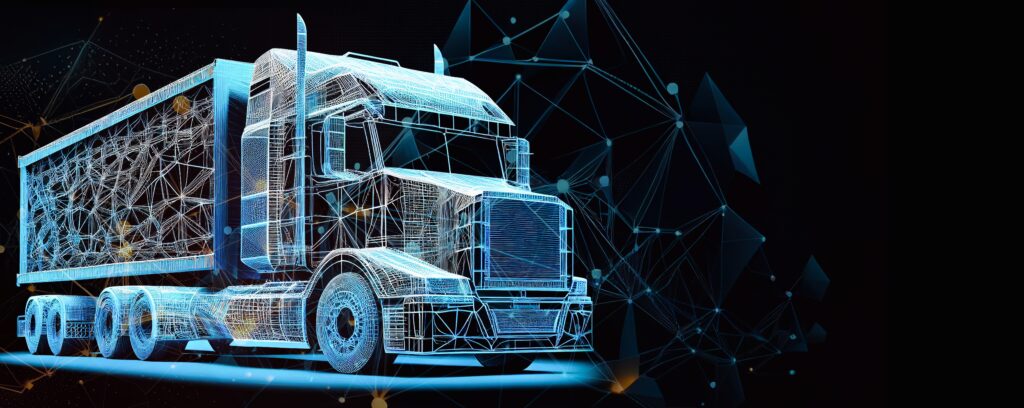Transportation and freight brokers are typically small business owners and have dealt with a complex system of paperwork in the past. Within this system, providing evidence of insurance with a form called a Certificate of Insurance (COI) was key to assuring credibility between stakeholders. As shared by insureon, “A certificate of insurance includes your name and address, the name of your insurance person or company, the start and end dates of your policy, the type of coverage you purchased, your coverage limits, your policy number, and a description of operations.”
As digital technology spreads across all parts of the industry, including carrier on-boarding and carrier monitoring, the means of communicating proof of insurance is also going through changes. Digital evidence of insurance is ushering in big changes, signaling efficiency, transparency, and rapidity. A stark contrast to the traditional methods of when someone requests a COI, this new way shows that trust will be immediate, and mistakes from doing things manually will be a thing of the past.

What Is a Certificate of Insurance and Why Is It Important?
The adoption of consumer-facing digital proof of insurance coverage is reshaping the landscape of the trucking industry, progressively replacing the traditional ACORD forms, Certificates of Insurance, and ID cards. This transition marks a pivotal stride towards digitalization, offering freight brokers and the trucking companies that are contracted to haul loads instantaneous access to essential insurance information while streamlining processes that were once paper-bound and manual. As the industry continues down this digital path, it aligns with broader technological trends.
Telematics integration, driven by real-time data on vehicle performance and driver behavior, is enhancing risk assessment and enabling auto insurance companies to craft more personalized insurance coverage options. Moreover, blockchain technology is emerging as a security and transparency solution for auto liability insurance, addressing fraud concerns and strengthening trust within the industry. This digital transformation signifies a future where the processes to vet and monitor a motor carrier’s insurance and trucking authority improve exponentially with increased efficiency, data-driven insights, and a competitive edge in the ever-evolving transportation world.
The ‘Old’ Process and its Challenges
Historically, the logistics of managing trucking company insurance details were filled with complications. Physical proof of insurance, while tangible, presented its unique set of challenges. Paperwork often created problems because it was physical and ‘point in time’. Environmental issues with reams of paper notwithstanding, the now issued certificate requires a manual process to maintain and update. Adding to the intricacies, the traditional methods for filing insurance claims employed manual data entry, heightening the risk of human errors. Small business owners faced these limitations, and it became clear that the old systems did not keep up with the fast pace of modern business transactions.
The ACORD form, representing a standardized ‘point in time’ certificate of insurance, was a cornerstone of the old way. Organizations would often anxiously wait for these forms because they knew that any delay could slow down their operations, especially when they needed to hire carriers. Once obtained, additional insurance forms were manually keyed into systems, a process susceptible to human error. Adding to these difficulties, the ever-evolving nature of businesses meant that data required constant updates, making manual interventions both frequent and laborious.
- Obtaining the ACORD Form: Long waiting periods impact operational flow.
- Manual Keying: Error-prone, relying heavily on human accuracy.
- Requests for Updates: Perpetually chasing the most recent data, such as the effective date and expiration date, what type of coverage or additional insured wastes time and resources.
The Rise of Digital Evidence of Insurance
Digital transformation in insurance verification promises more than just automation; it offers a new way of working. It addresses the inherent inefficiencies of the old system, presenting a streamlined, error-free method. By establishing direct digital channels with the insurance company or insurance agent, the exchange of data is not just swift but also error-free. This digital shift eliminates the lag between updates, ensuring real-time data availability.
In this scenario, enterprise software plays a pivotal role, serving as the key element. The Smart COI™ is the patented enterprise software solution from Certificial®, integrated at the insurance agent level, that enables a digital handshake between systems. Freight tech provider, Carrier Details, facilitates an industry tailored connection via API creating an interface of free flowing data, ensuring synchronization and immediate availability. For freight businesses, this means no more waiting for updates or manually keying in data. The digital revolution in insurance verification is not just a convenience; it’s a monumental leap toward efficiency and accuracy.
- Digital Data Transfer: Uninterrupted and precise data flow.
- System-to-System Communication: Seamless updates and synchronization.
- Continuous updates of insurance coverage: Real-time data, eliminating the need for periodic manual checks.
Empower Your Team With Digital Evidence of Insurance From Carrier Details
Transitioning from traditional Certificate of Insurance to digital evidence of insurance is more than an operational shift; it’s a strategy that propels businesses into a future-ready state. The Smart COI integration by Carrier Details positions businesses for next generation technology and performance. By embracing digital verification, freight transportation participants not only enhance their efficiency but also fortify their credibility to potential clients. They can respond faster, make informed decisions, and elevate their service quality. Furthermore, this shift towards digital evidence of insurance, when coupled with FMCSA source datasets from Carrier Details, empowers businesses with the critical, real-time, accurate data that powers their freight technology.
The integration of digital evidence of insurance, the source repository of FMCSA snapshot data, and SAFER web information en masse aids in making informed decisions, streamlining operations, and reinforcing client trust. As organizations shift towards this digital-first strategy, they leverage the combined capabilities of technology and data, establishing fresh standards for delivering services and achieving operational excellence. In a rapidly evolving landscape, staying ahead requires embracing the digital transformation of critical data, including insurance. Contact Carrier Details today for more information on how we can empower your operations!
